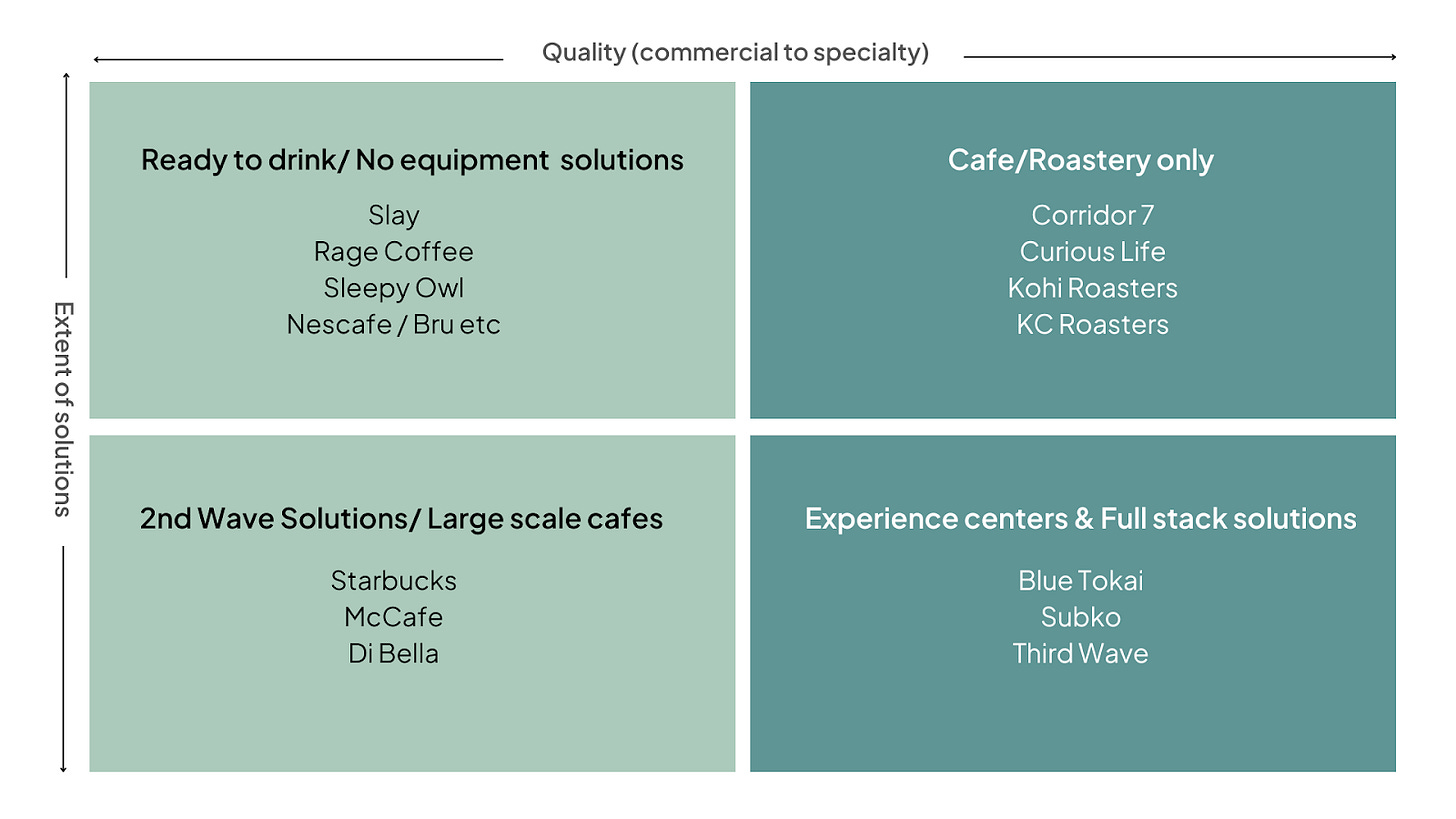Blue Tokai 01: Brand breakdown
India’s evolving relationship with coffee and the rise of D2C coffee brands
Brand Breakdown is Shopflo’s monthly 4-part newsletter, in which we deep dive into an Indian D2C brand, and understand its constituent elements to figure out what makes it tick ⏰
It's good news for all coffee lovers because Blue Tokai is this month’s pick. In today’s newsletter, we discuss the market dynamics of the industry that set the stage for this brand to flourish.
India and its beloved chai go way back. A steaming cup of chai comes with a lot of emotion attached to it. Everyone has a chai story, whether it's enjoying a quiet evening with your parents or having a cup in between classes at your favorite tea stall. Although this love story with chai is still going strong, the coffee industry has been flourishing lately, and how.
Coffee is a drink that has grown from an after-dinner ritual to a voguish beverage in the span of 200 years
The commercial cultivation of coffee only began in 1840, when the British established coffee plantations all over the south of India. By the middle of the 19th century, coffee was being served in all the clubs, starting from the Bengal Club in 1827. Within the British administration, coffee became somewhat of an after-dinner ritual at banquets. This tradition carried on to upper-middle-class Indians as well, and varieties of instant and filter coffees perforated the market.
A rebirth of sorts for the coffee industry came about in the 20th century with the sprouting of numerous Cafe Coffee Days, Baristas, and Costa Coffees all over India. Cafe culture became a lifestyle that found its roots at this time. From dates to work meetings and study sessions, cafes were the go-to place; but even then, taking the effort to brew your own coffee at home was still unheard of.
The ‘third wave’ of coffee is a term that originated in the United States in the 1990s and reached India by the late 2000s. This movement shone a spotlight on the region of production, the roasters, and the flavor of the beans; and introduced the concept of ‘premium coffee’. Premium coffee consists of three stages: Sourcing, Roasting & Brewing, and ensuring high-quality standards at all three stages; thus began the advent of numerous D2C coffee brands like Blue Tokai, KCROASTERS, Third Wave, with even Tata entering the market. At this time, home brewing saw a huge spike, especially during the lockdown in 2020 (is there anyone who didn’t Dalgona?). Coffee transitioned from a ‘pick-me-up’ beverage to an art form that went way beyond just meeting at a cafe.
The new D2C brands leveraged social media as a means to reach their TG, share recipes, educate their followers about brewing equipment and grind sizes, and to build an overall ecosystem of coffee lovers. Along with this new-found experiential drinking of coffee, discussions over flavour notes, roasts (those who preferred more complex flavours sought lighter roasts, while those with a penchant for an acidic, bolder flavour opted for darker roasts), beans, and journeys from farm to cup found its footing.
Each of the newer D2C startups broke the monotony in the coffee industry to carve their own niche and offer unique solutions. Whether it be Rage Coffee which brought new flavour profiles into the instant coffee space, Sleepy Owl which introduced varieties of cold brew to India kicking off a new craze, or Subko which sells an entire coffee experience, the range of the industry has been widened.
Single-origin coffee rose in acclaim. The estates that the coffee originates from and the story behind each bean were woven into the brand narrative, which was prominently displayed on each brand’s website, creatives, and even their packaging. This practice of creating a brand story has played a major role in creating communities and establishing a relationship with their consumers.
When it comes to coffee, the future looks good
Currently, we might just be in the seed stages of a fourth wave, with innovations that are frequently cropping up in the coffee industry. Whether it be experimentation with the product packaging in the form of drip bags, capsules, and coffee pods, or flavour profiles with Blue Tokai’s coffee and tonic water, Sleepy Owl’s collaboration with Greater Than for a coffee gin, or even in terms of purchasing models with online monthly subscriptions; the coffee industry currently seems to be ever-expanding. As they are moving into unserved sections of the market, it’ll be interesting to see how the future business models for coffee shape up.
Happy Brewing!
In the next edition of this month’s brand breakdown, we’ll take a look at the beginnings of Blue Tokai, and how the founders took the desire to drink ‘freshly roasted coffee’ and created a brand out of it.
Write back to us for any suggestions, feedback, or collaborations! Happy to connect




